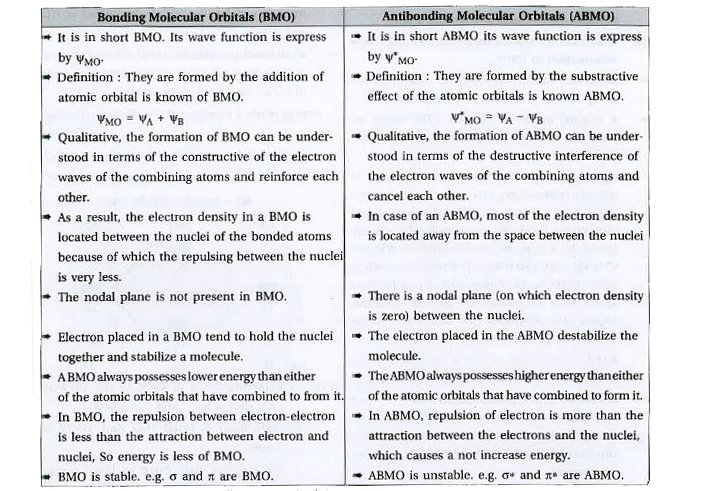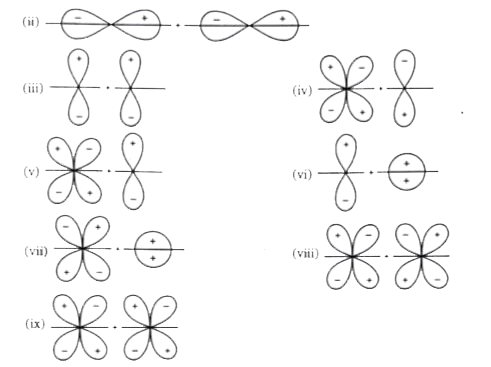Give difference: Bonding molecular orbital and antibonding molecular orbitals.
The following Structure are
Topper's Solved these Questions
- CHEMICAL BONDING AND MOLECULAR STRUCTUREBOOK - KUMAR PRAKASHANCHAPTER - CHEMICAL BONDING AND MOLECULAR STRUCTUREEXERCISE - TRY YOUR SELF-3
1 Videos
- CHEMICAL BONDING AND MOLECULAR STRUCTUREBOOK - KUMAR PRAKASHANCHAPTER - CHEMICAL BONDING AND MOLECULAR STRUCTUREEXERCISE - TRY YOUR SELF-4
1 Videos
- CLASSIFICATION OF ELEMENTS AND PERIODICITY IN PROPERTIES BOOK - KUMAR PRAKASHANCHAPTER - CLASSIFICATION OF ELEMENTS AND PERIODICITY IN PROPERTIES EXERCISE - Section -D SOLUTIONS OF NCERT EXEMPLAR PROBLEMS (Long Answer Type Questions )
7 Videos
Similar Questions
Knowledge Check
Assertion: The bond order of helium molecule is always zero.
Reason: The number of electrons in bonding molecular orbital and antibonding molecular orbital is equal.AIf both assertion and reason are true and the reason is the correct explanation of the assertionBif both assertion and reason are true but reason is not the correct explanation of the assertionCif assertion is true but reason is falseDif the assertion and reason both are falseAssertion(A) - Fluorine molecule has bond order one.
Reason(R)-The number of electrons in antibonding molecular orbital is two less than that of bonding molecular orbitals.ABoth A and R true and R is the correct explanation of ABBoth A and R true and R is not a correct explanation of ACA is true but R is falseDA is false but R is trueMolecular orbital theory is based on linear combination of atomic orbitals (LCAO). According to LCAO when respective atomic orbitals of the atoms interact, they undergo constructive and destructive interference giving rise to two types of molecular orbitals, that is, bonding and antibonding molecular orbitals.
If z is the molecular axis then which of the following overlapping results in non-bonding molecular orbital?A(dx2−y2+dx2−y2)B(dxy+dxy)C(dyz+py)D(dxy+pz)
Molecular orbitals are formed by the overlap of atomic orbitals. The combining orbitals must have proper orientation so that they can overlap to a considerable extent. Two atomic orbitals combine to form two molecular orbitals called bonding molecular orbital and antibonding molecular orbital. Bonding molecular orbital is stable and antibonding molecular orbital is unstable. σ MO is formed by head on overlap while π MO is formed by sidewise overlap.

The MOs are filled with electrons according to the same rules as followed for filling atomic orbitats. Bond order is one of the most important parameter to compare the bond strength and bond length of bonds.
Why has N2 a larger dissociation energy than N+2 whereas O2 has a lower dissociation energy than O+2?
View SolutionExplain bonding and antibonding molecular orbitals.
View SolutionThere are some arrangements of atomic orbitals which are given below:

 Then calculate the value of "QtimesR-P'" where P, Q and R are no. of arrangements which give bonding molecular orbitals (positive overlap), antibonding molecular orbitals (negative overlap) and non-bonding molecular orbitals (zero overlap) respectively.
Then calculate the value of "QtimesR-P'" where P, Q and R are no. of arrangements which give bonding molecular orbitals (positive overlap), antibonding molecular orbitals (negative overlap) and non-bonding molecular orbitals (zero overlap) respectively.
View SolutionAccording to MOT, two atomic orbitals overlap resulting in the formation of molecular orbital formed. Number of atomic orbitals overlapping together is equal to the molecule orbital formed. The two atomic orbital thus formed by LCAO (linear combination of atomic orbital) in the phase or in the different phase are known as bonding and antibonding molecular orbitals respectively. The energy of bonding molecular orbital is lower than that of the pure atomic orbitals by an amount Δ. This known as the stabilization energy. The enerby of antibonding molecular orbital in increased by Δ' (destabilisation energy).
Q. Which of the following statements is not correct regarding bonding molecular orbitals?
View SolutionIn whihc of the following pair the moelcular orbitals are gerade or ungerade ?
View Solution
